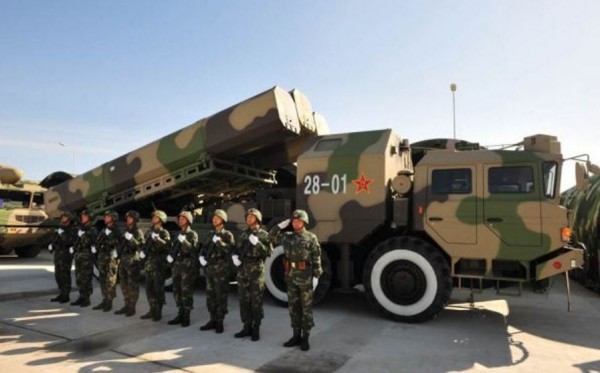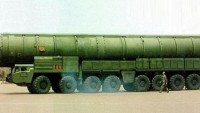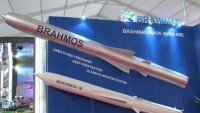China Strengthening A2/AD Defenses to End US Navy Freedom of Navigation Patrols
| Arthur Dominic Villasanta | | Sep 29, 2016 09:06 AM EDT |
(Photo : PLA) DF-10 cruise missile battery.
The People's Liberation Army (PLA) is focusing on developing a new generation of precision guided cruise missiles to thwart U.S. Navy freedom of navigation operation (FONOP) patrols in the South China Sea that China expects will continue in the years ahead.
These new missiles will also prevent U.S. Navy aircraft carriers from approaching China's coast, a deterrent that will greatly restrict the combat capability of the U.S. Navy, claims Li Jie, a leading researcher at the People's Liberation Army Navy Naval Military Studies Research Institute.
Like Us on Facebook
He's also a retired Senior Captain of the People's Liberation Army Navy (PLAN). The institute is PLAN's think tank.
Li said China has enhanced the capability of its Anti-Access/Area Denial (A2/AD) system so the U.S. can't take reckless military action. He believes the U.S. is very worried about anti-ship missiles, strategic bombers and other weapons that might severely challenge its FONOPs and overflights of coastal waters of other countries.
Against the threat brought on by China's long-range anti-ship missiles and precision-guided weapons, there are concerns U.S. aircraft carriers might not perform in future operational environments, said Li.
Li is also confident the DF-10 ground based land-attack cruise missile; the DF-21D anti-ship ballistic missile and the DF-26 intermediate range ballistic missile and other weapons paraded at last year's V-Day parade in Beijing will keep the U.S. Navy at bay.
The maximum range of the DF-26 is 4,000 km while the distance from the Chinese mainland coast to Guam is only 2,800 km. Li said Guam is within the range of Chinese missiles, and this is the biggest concern of the U.S.
He noted there are some experts that want faster and more flexible small aircraft carriers to replace heavy and inflexible large aircraft carriers to better avoid enemy fire. Unmanned aerial vehicles can also land on small aircraft carriers.
There is also the notion of equipping aircraft carriers with more radar technology and surface-to-air missiles. Li said there some that worry aircraft carriers will be out of date in the future.
The U.S. Navy, however, is confident their aircraft carriers' force projection capability and fighter jets are a decisive military advantage compared to the rest of the world.
TagsPeople's Liberation Army, Freedom of navigation patrols, FONOPS, US Navy, People's Liberation Army Navy, Li Jie
©2015 Chinatopix All rights reserved. Do not reproduce without permission
EDITOR'S PICKS
-

Did the Trump administration just announce plans for a trade war with ‘hostile’ China and Russia?
-

US Senate passes Taiwan travel bill slammed by China
-

As Yan Sihong’s family grieves, here are other Chinese students who went missing abroad. Some have never been found
-

Beijing blasts Western critics who ‘smear China’ with the term sharp power
-

China Envoy Seeks to Defuse Tensions With U.S. as a Trade War Brews
-

Singapore's Deputy PM Provides Bitcoin Vote of Confidence Amid China's Blanket Bans
-

China warns investors over risks in overseas virtual currency trading
-

Chinese government most trustworthy: survey
-

Kashima Antlers On Course For Back-To-Back Titles
MOST POPULAR
LATEST NEWS
Zhou Yongkang: China's Former Security Chief Sentenced to Life in Prison

China's former Chief of the Ministry of Public Security, Zhou Yongkang, has been given a life sentence after he was found guilty of abusing his office, bribery and deliberately ... Full Article
TRENDING STORY

China Pork Prices Expected to Stabilize As The Supplies Recover

Elephone P9000 Smartphone is now on Sale on Amazon India

There's a Big Chance Cliffhangers Won't Still Be Resolved When Grey's Anatomy Season 13 Returns

Supreme Court Ruled on Samsung vs Apple Dispute for Patent Infringement

Microsoft Surface Pro 5 Rumors and Release Date: What is the Latest?













